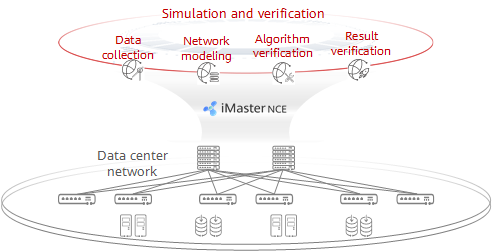What Is Simulation and Verification?
Simulation and verification is a pre-event verification function provided by iMaster NCE-Fabric — Huawei's data center controller — for network service changes. It can be used to calculate resources to be consumed and evaluate the feasibility of network service changes before implementation, helping you determine whether the changes can achieve the expected effect.
Why Do We Need Simulation and Verification?
As cloudification and big data are booming, an increasing number of new data center services are rolled out, requiring more frequent changes on networks. However, each network change may bring network faults. A network change, starting from solution formulation and review to verification and implementation, takes a long time. As a result, new services cannot be rolled out quickly. In addition, any improper network change may cause local or even network-wide service exceptions. According to related statistics, 40% of network accidents in the data center field are caused by manual configuration errors; the network management department spends three days on average evaluating the risk of a network change, with accuracy being only about 70%.
To address the preceding issues, Huawei iMaster NCE-Fabric provides the simulation and verification function to evaluate the feasibility and impact of network changes using intelligent algorithms, greatly reducing the network fault rate caused by network changes.
Implementation of Simulation and Verification
Before performing network changes, O&M engineers can simulate the changes on iMaster NCE-Fabric based on the live network. iMaster NCE-Fabric collects information such as the topology, configuration, and resources of the live network, creates a virtual mirroring environment, delivers change operations to the virtual mirroring environment, and then performs simulation and analysis using the Configuration Plane Verification (CPV) algorithm. In this manner, you can analyze the feasibility and impact of network changes without changing the live network, including whether configurations conflict, whether resources are sufficient, and whether the network connectivity is normal. If the simulation result meets the intent and no service risk will be caused, the simulation solution can be delivered to the live network in one-click mode to quickly implement network changes.

Simulation and verification diagram
For details about implementation of simulation and verification, watch the following video.
- Author: Gao Yangyang
- Updated on: 2023-03-09
- Views: 1231
- Average rating:






